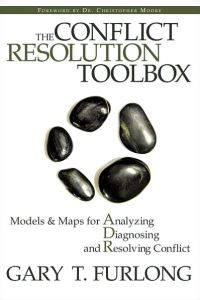Join getAbstract to access the summary!

Join getAbstract to access the summary!
Gary Furlong
The Conflict Resolution Toolbox
Models & Maps for Analyzing, Diagnosing and Resolving Conflict
Wiley, 2005
What's inside?
Pull yourself out of conflict quagmires with eight step-by-step models for resolving them.
Recommendation
Gary T. Furlong breaks down the complex interactions that accompany interpersonal conflicts into understandable units and introduces eight models for resolving differences. Because Furlong devotes a single chapter to each model, his book is a useful reference. Experienced mediators can dip in as needed or flip rapidly between examples. It would also make a good textbook, although students may find some of Furlong’s explanations of the nature of conflict overly complicated – and his diagrams only make the problem worse. getAbstract recommends this book to conflict-resolution specialists, human-resource managers, and students and their teachers who are looking for guidance through rocky employee-interaction terrain.
Summary
About the Author
Gary T. Furlong is a mediator and conflict-resolution trainer.

















Comment on this summary